Directions (1-5): Study the following information to answer the given questions:
Certain number of boxes are kept one above the other. Each box contains different cuisines. No other Box and cuisine are present in the boxes other than the ones mentioned below. There are two boxes between Box F and Box E which contains Mughlai cuisines. The box which contains Kashmiri cuisines is just above the box which contains Konkani cuisines. Box D is just below box B which is below E. Three boxes are between F and B. Box A contains Maharashtrian cuisines. Box C contains Kashmiri cuisines and is just below Box F which is placed among the top three boxes. No box is kept below Box D. Not more than one box is above box A. Box which contains Gujarati cuisines is above but not immediate above Parsi cuisines. Neither Box F nor Box D contains Parsi cuisines. Only two boxes between box G and box which contains Bengali cuisines. Not more than three boxes are between boxes containing Bengali and Mughlai cuisines.
Q1. What is the total number of boxes?
(a) Six
(b) Nine
(c) Eight
(d) Seven
(e) None of these
Q2. Which of the following box are kept just above box A?
(a) D
(b) C
(c) F
(d) B
(e) none
Q3. Which of the following boxes contain Konkani cuisines?
(a) D
(b) G
(c) F
(d) B
(e) none of these
Q4. How many boxes are kept between Boxes containing Maharashtrian cuisines and Box F?
(a) One
(b) Two
(c) Three
(d) Four
(e) None
Q5. Which of the following combination of box and cuisine is correct?
(a) F- Bengali
(b) B-Parsi
(c) A-Gujarati
(d) G-Maharashtrian
(e) none of these
Directions (6-7): In each of the questions below three statements are given followed by some Conclusions. You have to take the given statements to be true even if they seem to be at variance from commonly known facts. Read all the Conclusions and then decide which of the given Conclusions logically follows from the given statements disregarding commonly known facts.
Q6. Statements:
Only a few paper are note.
Some note are yellow.
All White are yellow.
Conclusions:
I. No white is paper
II. All yellow are paper is a possibility.
III. All paper is note is possibility.
(a) Only I follows
(b) Only II follows
(c) Only I and III follow
(d) Only III follows
(e) None follows
Q7. Statements:
No rabbit are Dog.
Some Dogs are Rat.
Only a few rabbit are cat.
Conclusions:
I. Some cat are not rat.
II. Some rabbit are rat.
III. All cat are rat.
(a) Only I follows
(b) Only II and III follow
(c) Either I or III follow
(d) Only II follow
(e) None of these
Q8. In a row of students, Ashish is 15th from the right end and Neha is 10th from the left end. If in this row Neha is 12th from the right, then what is the position of Ashish from the left?
(a) 8th
(b) 7th
(c) 10th
(d) 12th
(e) None of the above
Q9. Which alphabet is 3rd from the left in the meaningful four-letter word formed from the first, third, seventh and eighth letter of the word REQUIREMENT? If more than one word is formed, then mark answer as X and no meaningful word is formed then mark answer as Z.
(a) M
(b) X
(c) Q
(d) Z
(e) R
Q10. How many such pairs of letters are there in the word EXPANSION each of which has as many letters between them as in the English alphabet?
(a) One
(b) Four
(c) Two
(d) Three
(e) More than four
Directions (11-15): Read the following information carefully and answer the following questions.
Nine persons A, B, C, D, E, F, G, H, and I are going on trips to nine different places viz. Patna, Goa, Kanpur, Indore, Shimla, Mumbai, Delhi, Kolkata, and Bhopal but not necessarily in the same order. They all travel by three modes of transport viz. bus, trains, and ships. Not more than four and not less than two persons travel by the same mode of transport.
The one who travels by train goes to Indore. I is not going to Shimla and Bhopal. The one who is going to Bhopal do not travel by train. G was going to Kolkata but neither by bus nor train. Only H travels with the same mode of transport as G travels. D travels by bus but he is not going to Bhopal, Kanpur, and Delhi. Both B and I travels by same mode of transport but different with the one who travels to Goa. C travels to Goa by train. Neither E, nor F is going to Mumbai and Delhi. The one who travels to Delhi travels by bus. Neither B nor I travel to Delhi, and Mumbai. E is not going to Indore. The one who is going to Patna do not travel by bus and train.
Q11. Who travels to Shimla?
(a) E
(b) F
(c) The one who travels by Train
(d) The one who travels by Bus
(e) G
Q12. B is going to which city?
(a) Bhopal
(b) Indore
(c) Kanpur
(d) Kolkata
(e) Cannot be determined
Q13.Which combination represents the persons travelling by train?
(a) E, F, C, D
(b) H, E, F
(c) C, F, E
(d) H, G, C, E
(e) None of these
Q14. Four of the following five are alike in a certain way based on a group, which among the following does not belong to that group?
(a) Delhi
(b) Bhopal
(c) Mumbai
(d) Shimla
(e) Kanpur
Q15. Choose the incorrect combination of persons, places, and modes of transport from the following alternatives?
(a) B- Bhopal- Bus
(b) I- Kanpur- Bus
(c) F- Indore- Train
(d) D- Mumbai- Bus
(e) All are correct
Solutions
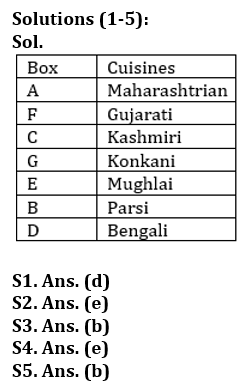
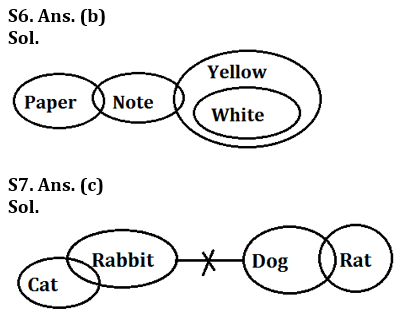
S8. Ans. (b)
Sol. Clearly, Ashish is 15th from the right and
Neha is 12th from the right end and 10th from the left end of the row
So, number of students in the row = (12 -1 + 10) = 21
Now, Ashish is 15th from the right
Number of boys to the left of Ashish= (21+1-15)
Hence, A is 7th from the left end of the row.
S9. Ans. (d)
S10. Ans. (c)
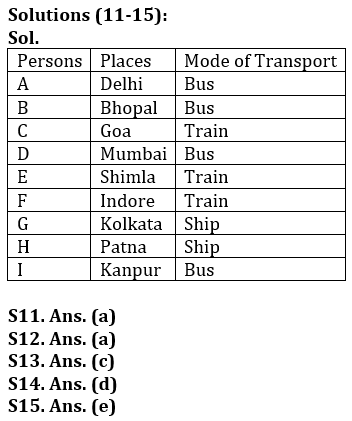



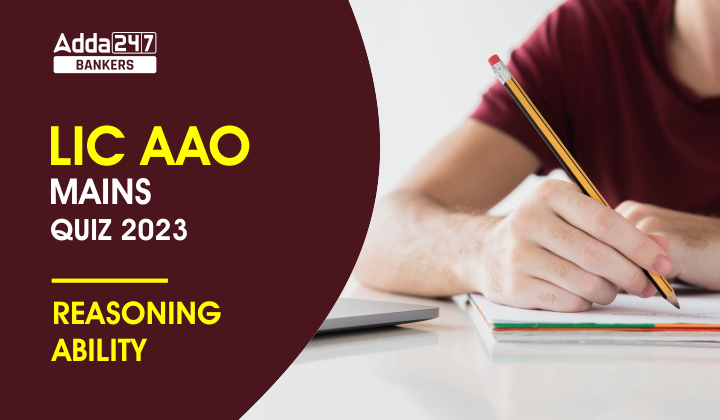

 GA Capsule for SBI Clerk Mains 2025, Dow...
GA Capsule for SBI Clerk Mains 2025, Dow...
 The Hindu Review October 2022: Download ...
The Hindu Review October 2022: Download ...
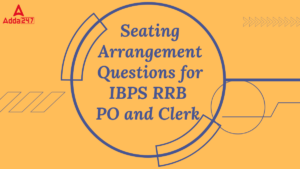 Seating Arrangement Questions for IBPS R...
Seating Arrangement Questions for IBPS R...





